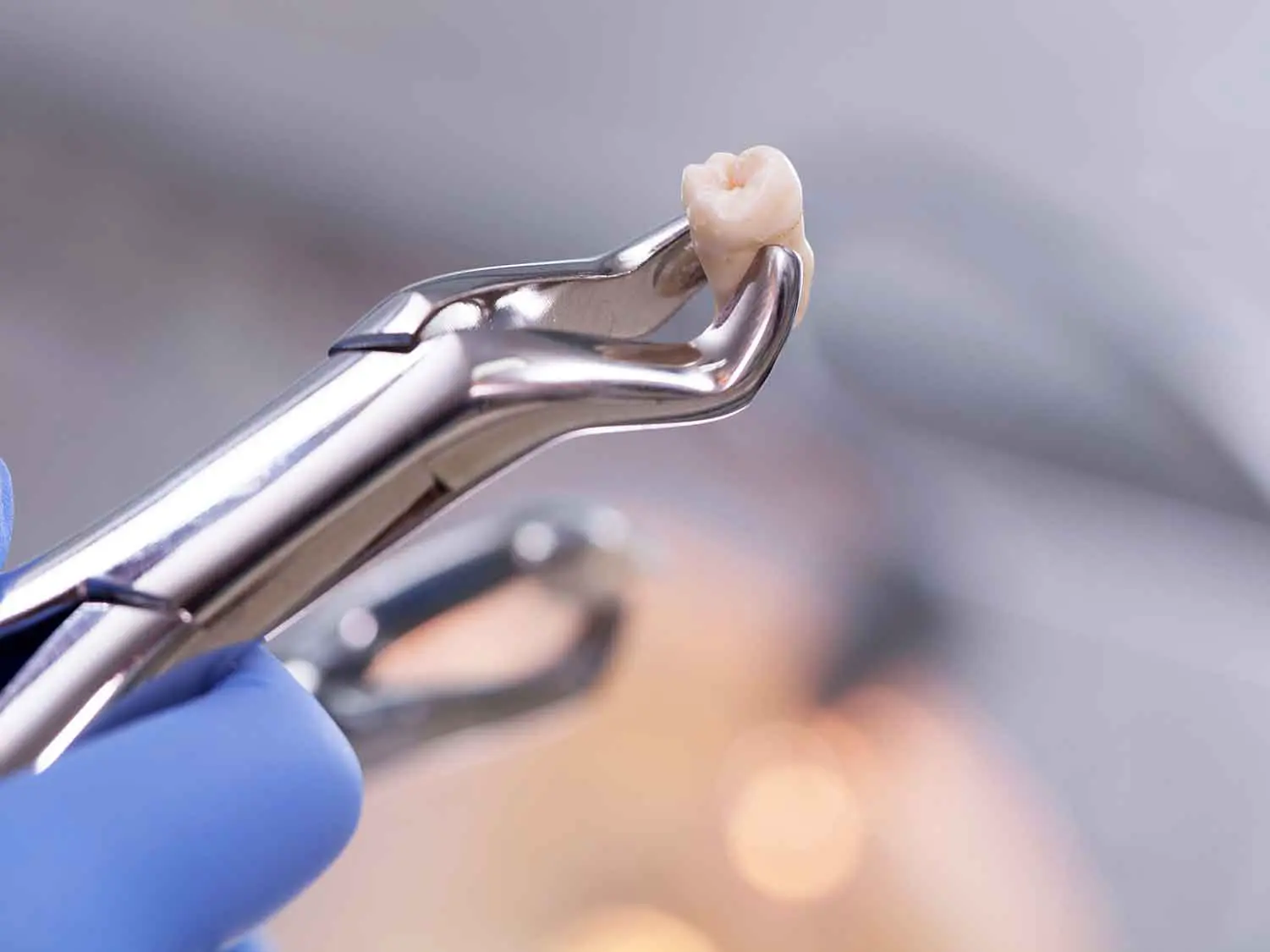Tooth extractions, while often considered a last resort in dental treatment plans, are sometimes necessary for maintaining oral health and preventing further complications.
This guide is meticulously crafted for patients at Palmetto Family and Cosmetic Dentistry. It provides an in-depth look into tooth extractions, helping you understand, when necessary, what the procedure entails and how to ensure a smooth recovery.
Covering all aspects of tooth extractions, this guide aims to alleviate concerns, empowering you to make informed decisions regarding your dental health.
Understanding Tooth Extractions
In the tooth extraction process, a tooth is extracted from its socket in the jawbone before being removed. Even though it is always the objective to preserve natural teeth, several situations may call for an extraction. These situations include severe decay, infection, overcrowding, or the need to prepare for orthodontic treatment.
When Are Tooth Extractions Necessary?
Tooth extractions are necessary if a tooth cannot be salvaged or if it poses a threat to the dental health of the patient. Here are some common reasons why tooth extractions may be recommended:
- Severe Decay: If tooth decay has progressed to an advanced stage, causing extensive damage to the tooth structure and compromising its integrity, extraction could be required in order to stop the spread of infection or another set of consequences.
- Advanced Gum Disease: Advanced periodontal (gum) disease can destroy the supporting tissues and bone around a tooth, causing it to become loose or mobile. In cases where the tooth cannot be saved with periodontal treatment, for the purpose of preventing the transmission of illness and maintaining dental health, extraction might be important.
- Impacted Wisdom Teeth: Because of a lack of room or faulty alignment, wisdom teeth, which are also referred to as third molars, have the potential to become impacted, which means they are unable to fully emerge through the gum line. Wisdom teeth that are impacted can result in a variety of complications, including pain, infection, damage to neighboring teeth, and the creation of cysts. When this occurs, it is possible that in order to alleviate discomfort and prevent problems, it will be suggested that the afflicted teeth be extracted.
- Orthodontic Treatment: In some cases, there is a possibility that tooth extraction will be required in order to make room for the remaining teeth to be aligned correctly. Extractions may be required to address crowding, protrusion, or bite discrepancies and achieve optimal treatment outcomes.
- Trauma or Injury: Teeth that have been severely fractured, cracked, or avulsed (knocked out) due to trauma or injury may not be salvageable and may require extraction. Extraction may be necessary in cases of significant damage to prevent infection, alleviate pain, and restore oral function.
- Failed Root Canal Treatment: If a tooth that has been treated with root canal therapy does not experience healing or becomes reinfected, extraction may be necessary to address the persistent infection and prevent its spread to surrounding tissues.
- Overcrowding: In cases of severe dental crowding or when preparing for orthodontic treatment, extraction of one or more teeth may be necessary to create space and achieve proper alignment of the remaining teeth.
- Supernumerary Teeth: Supernumerary teeth are extra teeth that may develop in addition to the usual complement. Extraction may be recommended when supernumerary teeth cause crowding, impaction, or other dental issues.
- Preventive Extraction: In some cases, teeth may be extracted as a prophylactic measure to lessen the impact of the risk of future dental problems. This may be necessary in individuals with compromised immune systems before specific medical procedures (e.g., chemotherapy or organ transplantation) or to address congenitally missing teeth.
After various options, tooth extraction is usually the last resort treatment options have been exhausted or are not feasible. It is of the utmost importance to receive advice from a competent oral surgeon or dentist to discuss the reasons for extraction, alternative treatment options, and potential consequences before proceeding.
Types of Tooth Extractions
- Simple Extractions: These are performed on visible teeth under local anesthesia, using instruments to lift and remove the tooth.
- Surgical Extractions: Required for teeth that are not easily accessible, such as impacted teeth. During this operation, it is possible that an incision will be made in the gum removing bone around the tooth, or cutting it before it can be extracted.
Choosing Palmetto Family and Cosmetic Dentistry for Your Extraction
Selecting the proper dental practice for your tooth extraction is crucial. Factors to consider include:
- Experience and Expertise: Look for a practice with a track record of successful extractions, including simple and surgical procedures.
- Comfort and Care: A practice that prioritizes patient comfort and provides clear communication can ease the anxiety associated with tooth extractions.
- Aftercare and Follow-Up: Proper aftercare is essential for healing. Choose a practice that offers comprehensive aftercare instructions and support.
Preparing for Your Tooth Extraction
- Consultation: Discuss your medical history, medications, and concerns with your dentist.
- Pre-Procedure Instructions: You may receive specific instructions based on your health history and the type of extraction. Follow these carefully to prepare for your procedure.
- Arranging Transportation: If you’re undergoing sedation, plan for someone to drive you home post-procedure.
The Extraction Procedure
The specifics of the tooth extraction procedure vary depending on whether it’s a simple or surgical extraction:
- Anesthesia: Local anesthesia is administered to numb the area. Sedation may be used, especially for surgical extractions or for patients with dental anxiety.
- The Extraction: Dental tools are used to loosen and remove the tooth for a simple extraction. Surgical extractions may involve incisions and removal of bone or tooth division.
- Closure and Clot Formation: The site is cleaned, and, if necessary, sutures are placed. A blood clot forms in the socket, crucial for healing.
Recovery and Aftercare
- Immediate Aftercare: Bite down on a gauze pad to control bleeding and allow the clot to form. Follow your dentist’s instructions regarding rest, medication, and when to replace the gauze.
- Pain Management: Over-the-counter or prescribed pain relievers can manage discomfort. Ice packs can help reduce swelling.
- Diet: Stick to soft foods and avoid hot liquids and alcoholic beverages for the first 24 hours. Gradually reintroduce solid foods as healing progresses.
- Oral Hygiene: Avoid brushing the extraction site for the first 24 hours. Rinse with salt water after meals and before bed to keep the area clean.
Potential Complications and Their Management
While complications are rare, it’s essential to be aware of them:
- Dry Socket: This occurs if the blood clot fails to form or is dislodged, leading to delayed healing and pain. Contact your dentist if you suspect a dry socket.
- Infection: Signs include fever, pus, and severe pain. Follow all aftercare instructions and keep follow-up appointments to minimize this risk.
Cost and Insurance Coverage
The cost of tooth extractions can vary widely based on the complexity of the procedure and your location. Many dental insurance policies cover some cost extractions, especially when deemed medically necessary.
Palmetto Family and Cosmetic Dentistry offers transparent pricing and can assist with insurance claims and financing options to make the process as stress-free as possible.
Tooth extractions at Palmetto Family and Cosmetic Dentistry are meticulously performed, ensuring your comfort and safety. Understanding the need for extractions, the procedure, and how to care for yourself afterward can significantly impact your recovery and overall experience.
Our specialized team helps you throughout, from initial consultation to full recovery, ensuring your dental health is restored and maintained. Remember, while the prospect of a tooth extraction may seem daunting, it can be a crucial step towards a healthier, pain-free smile.

